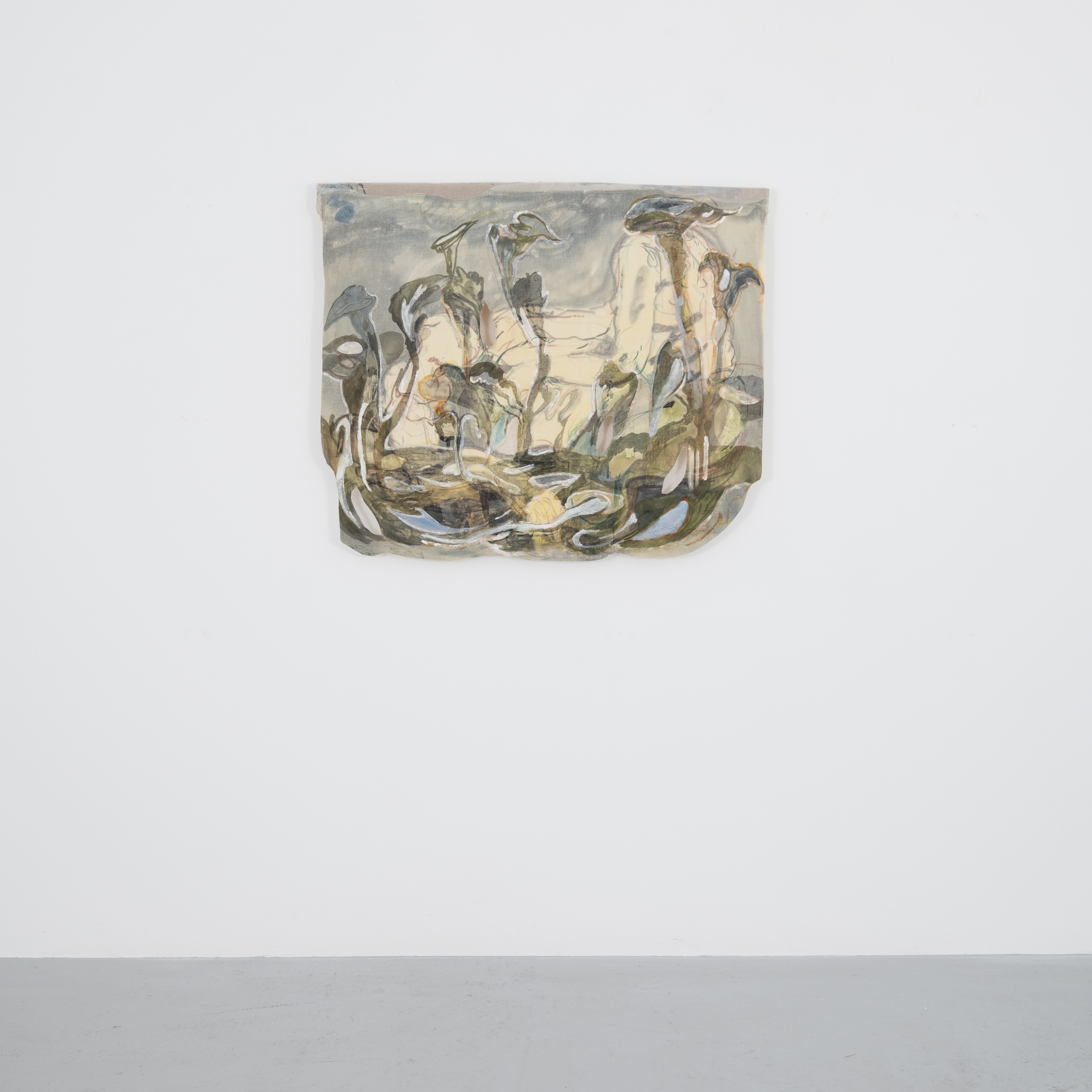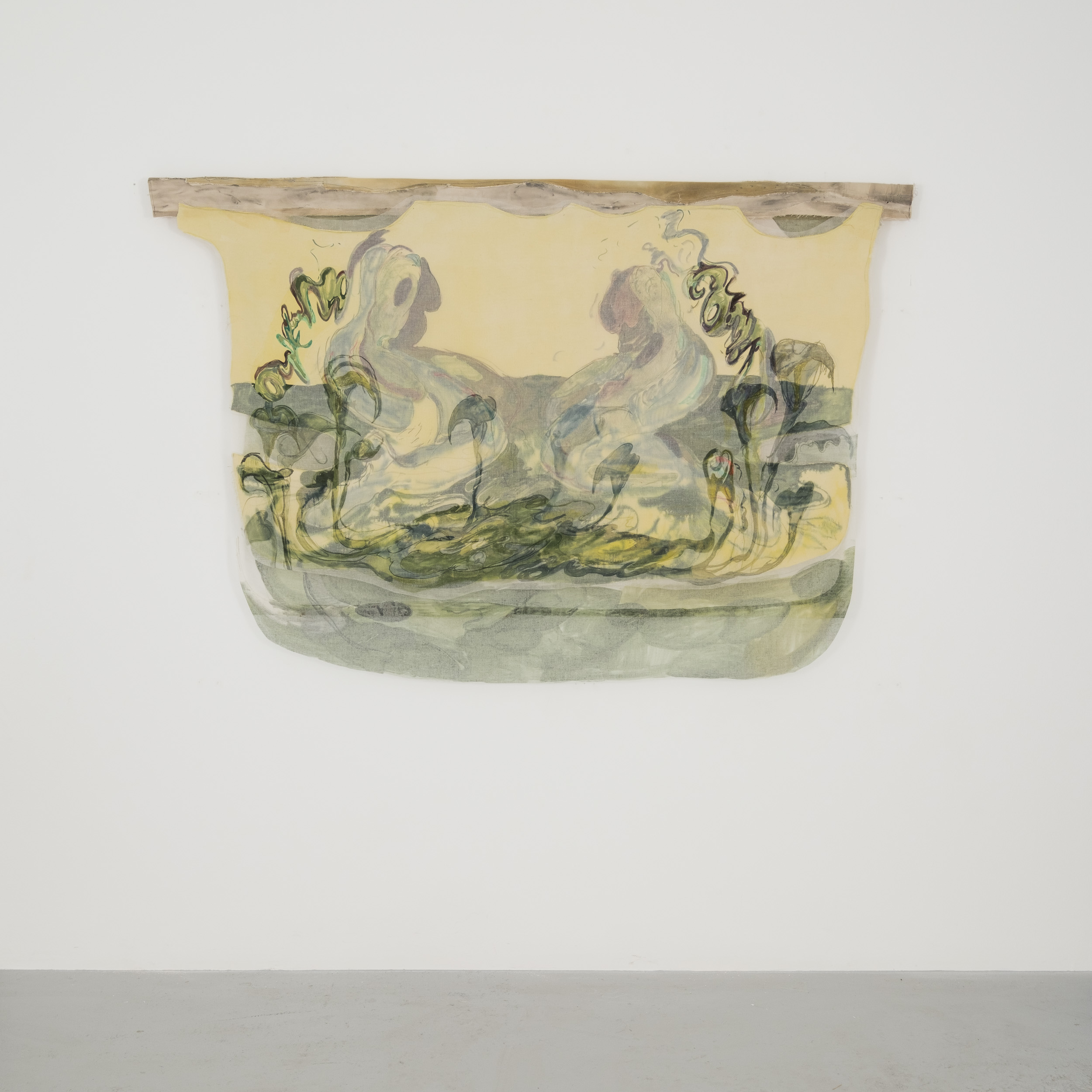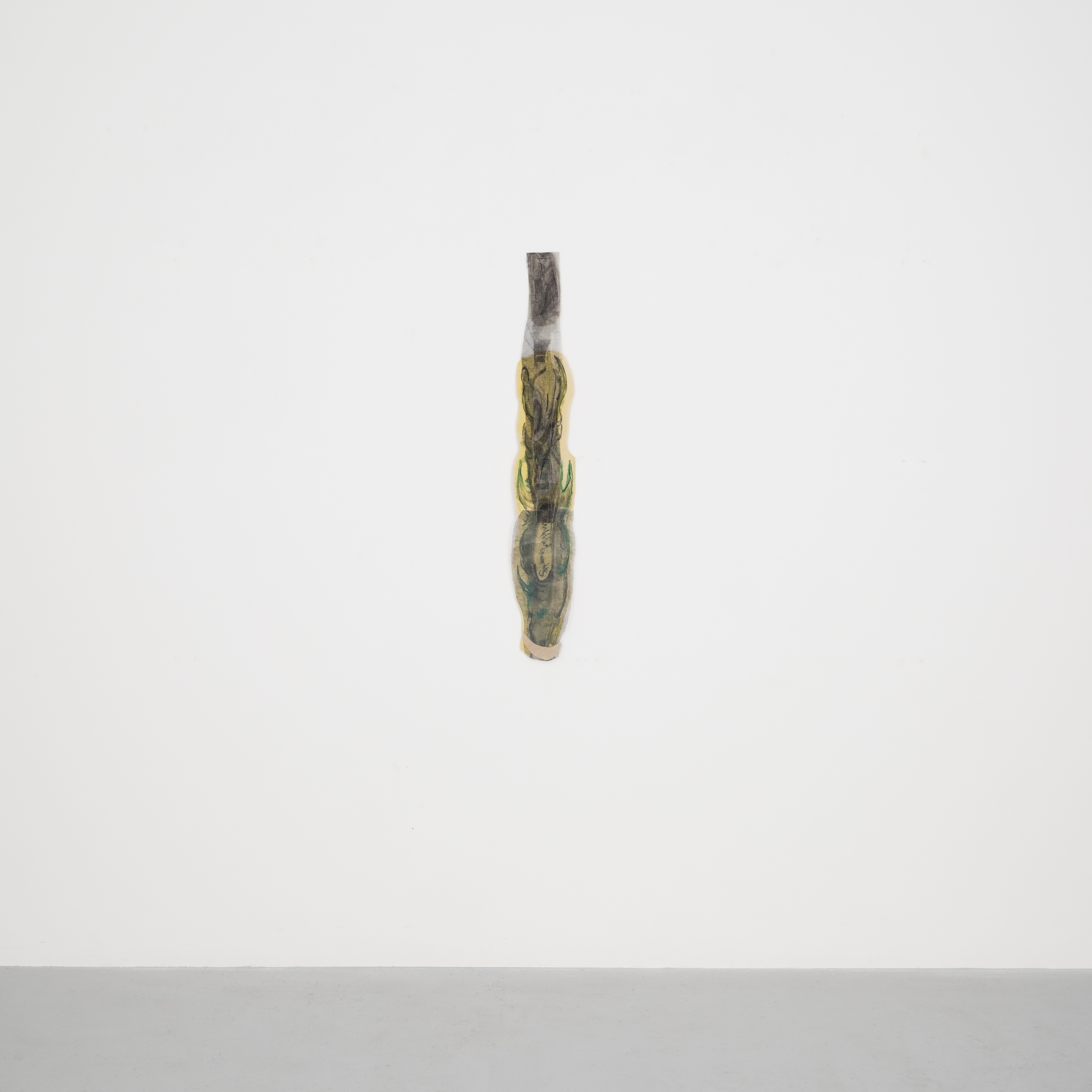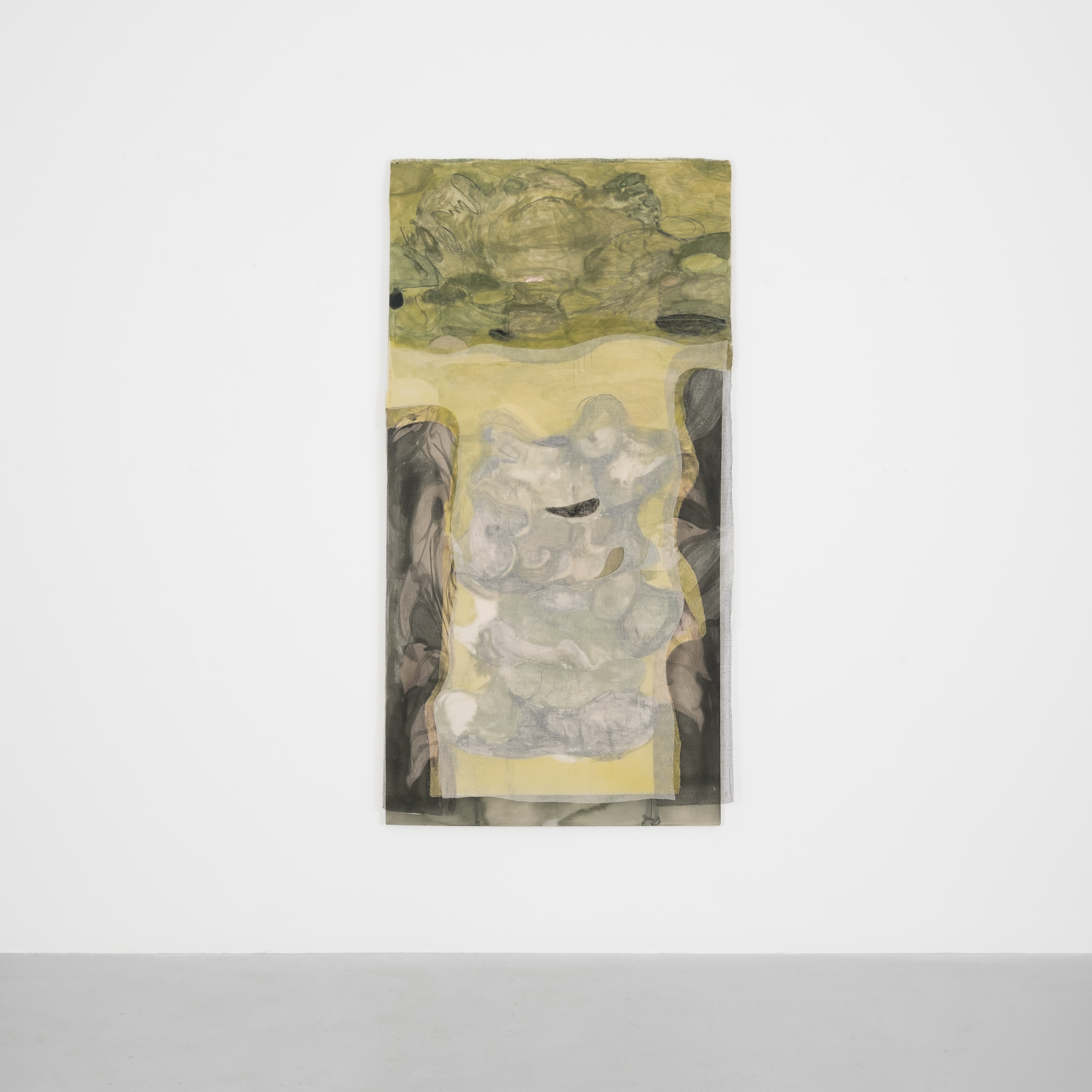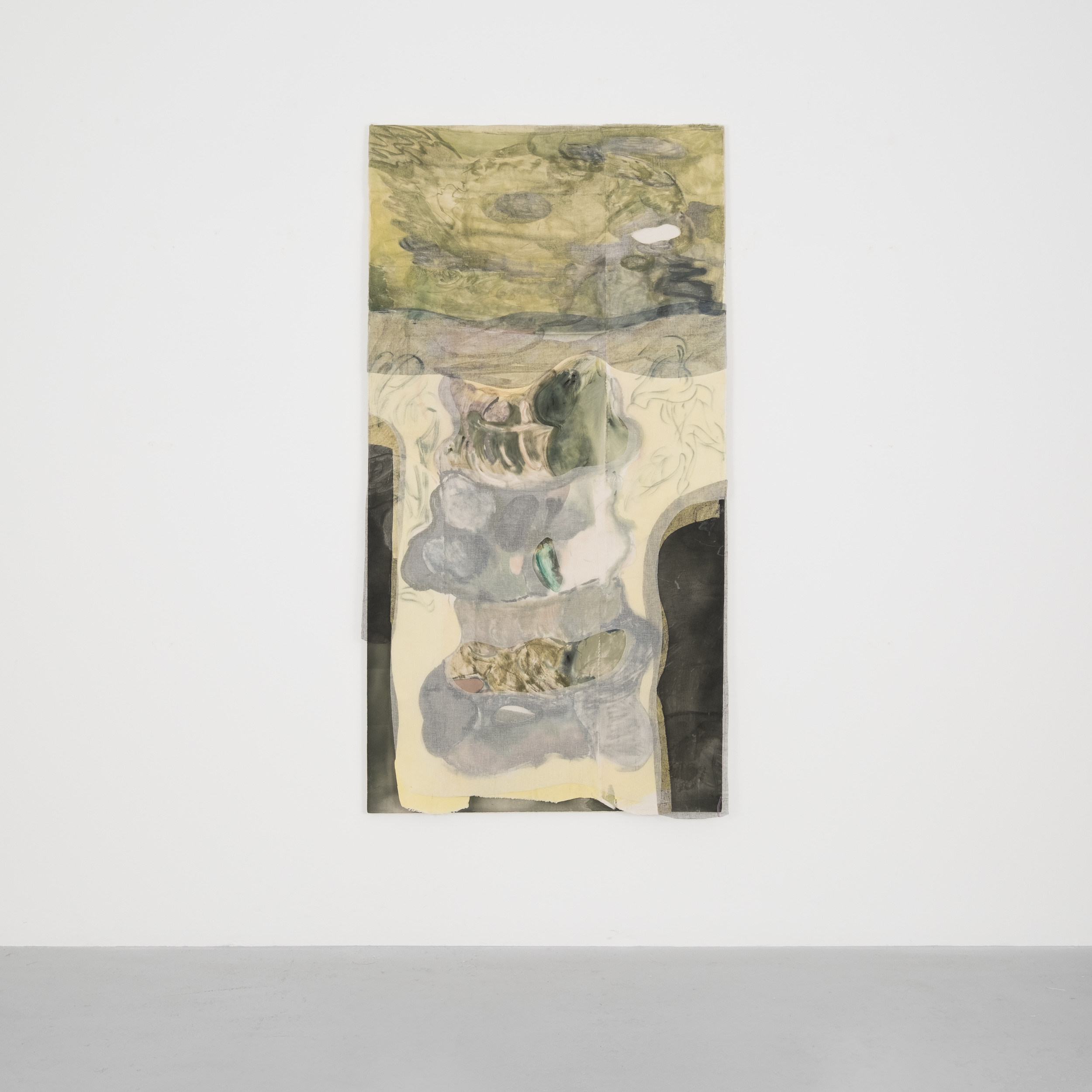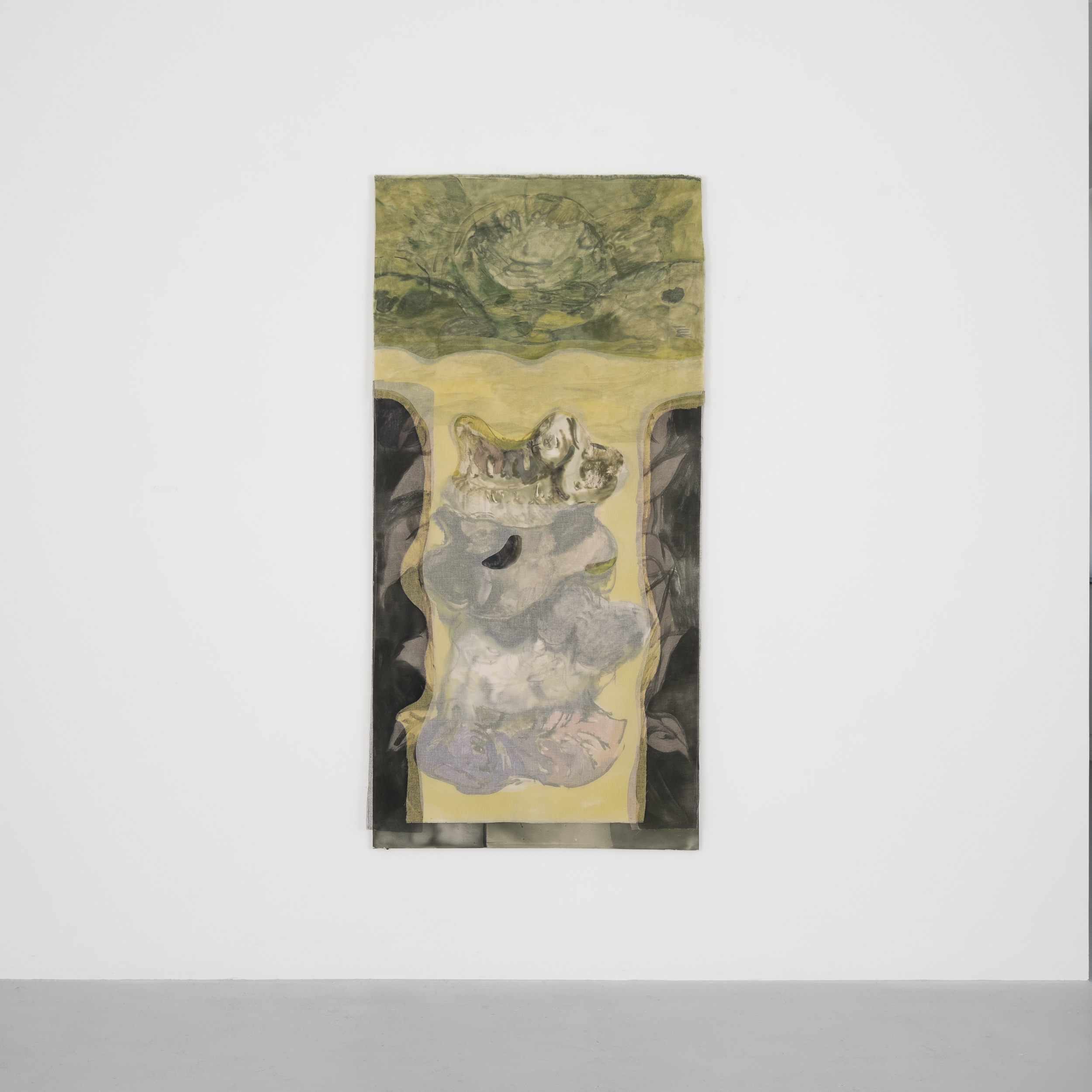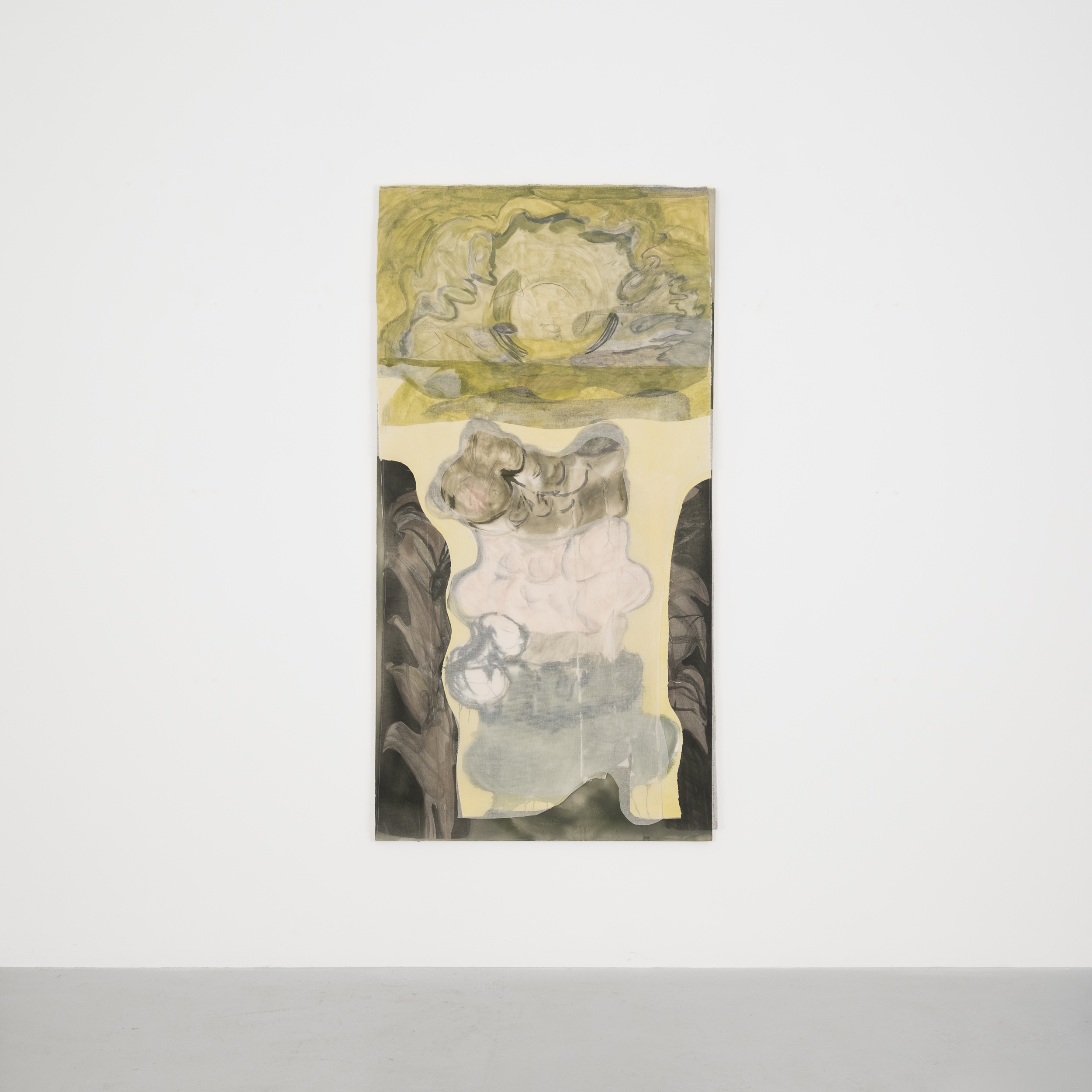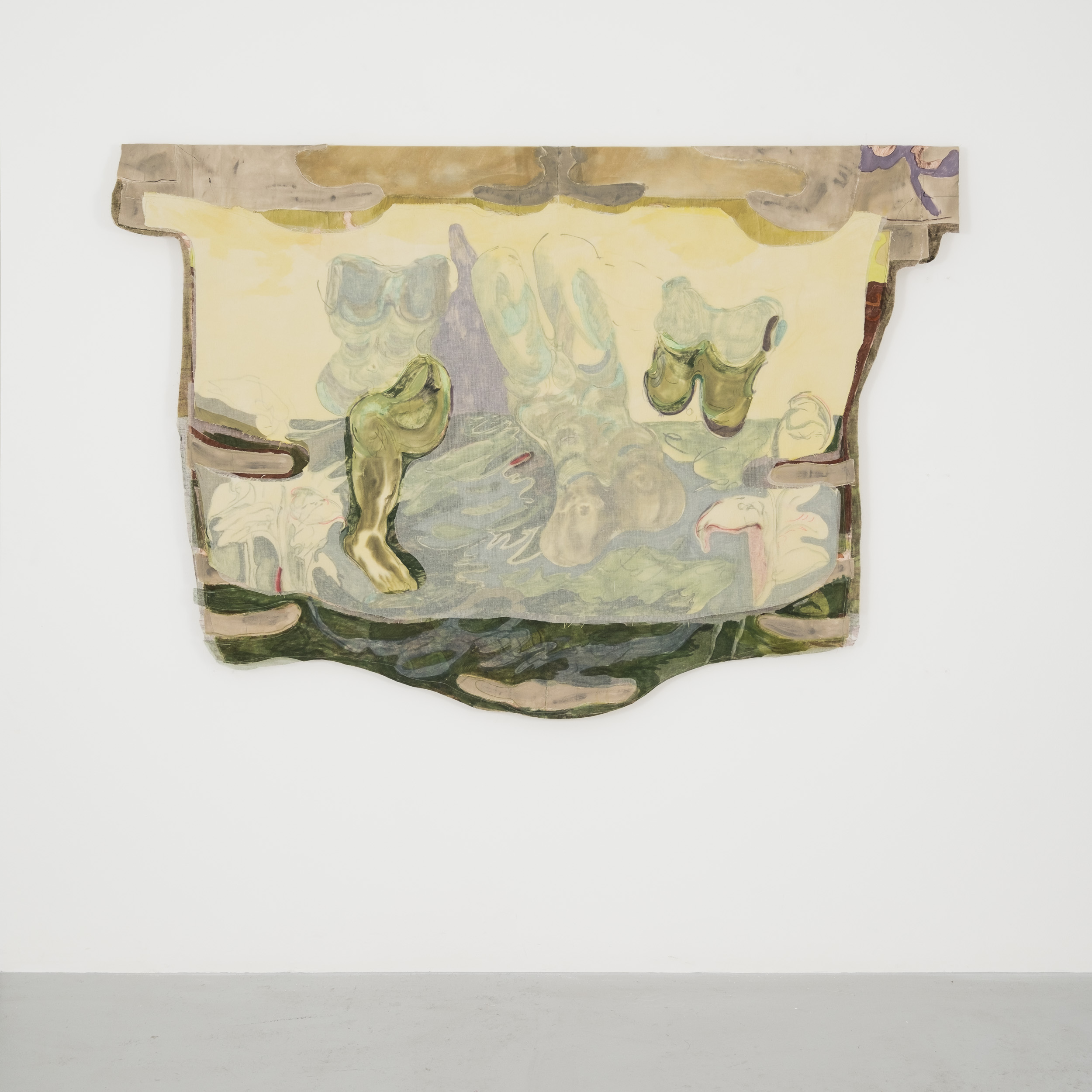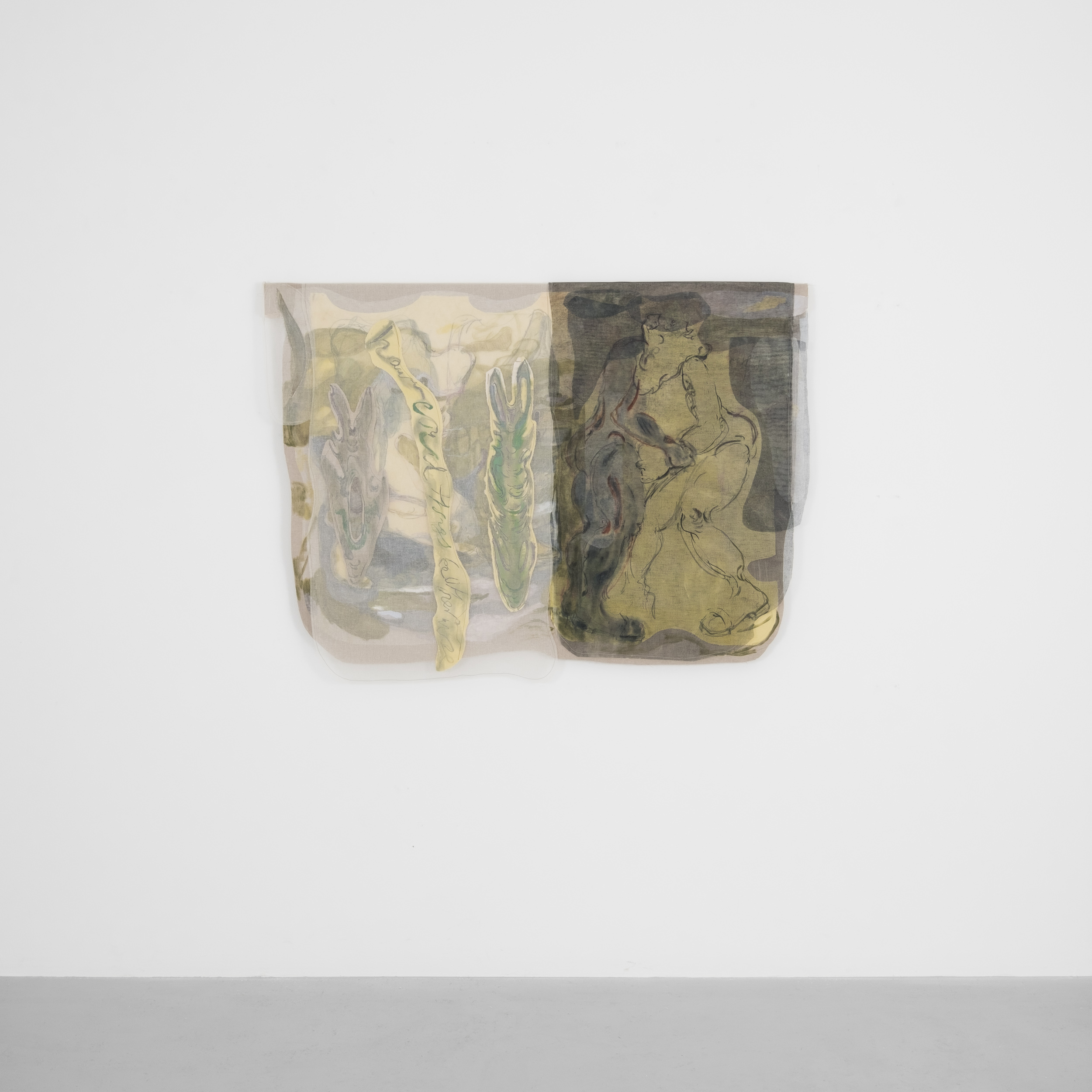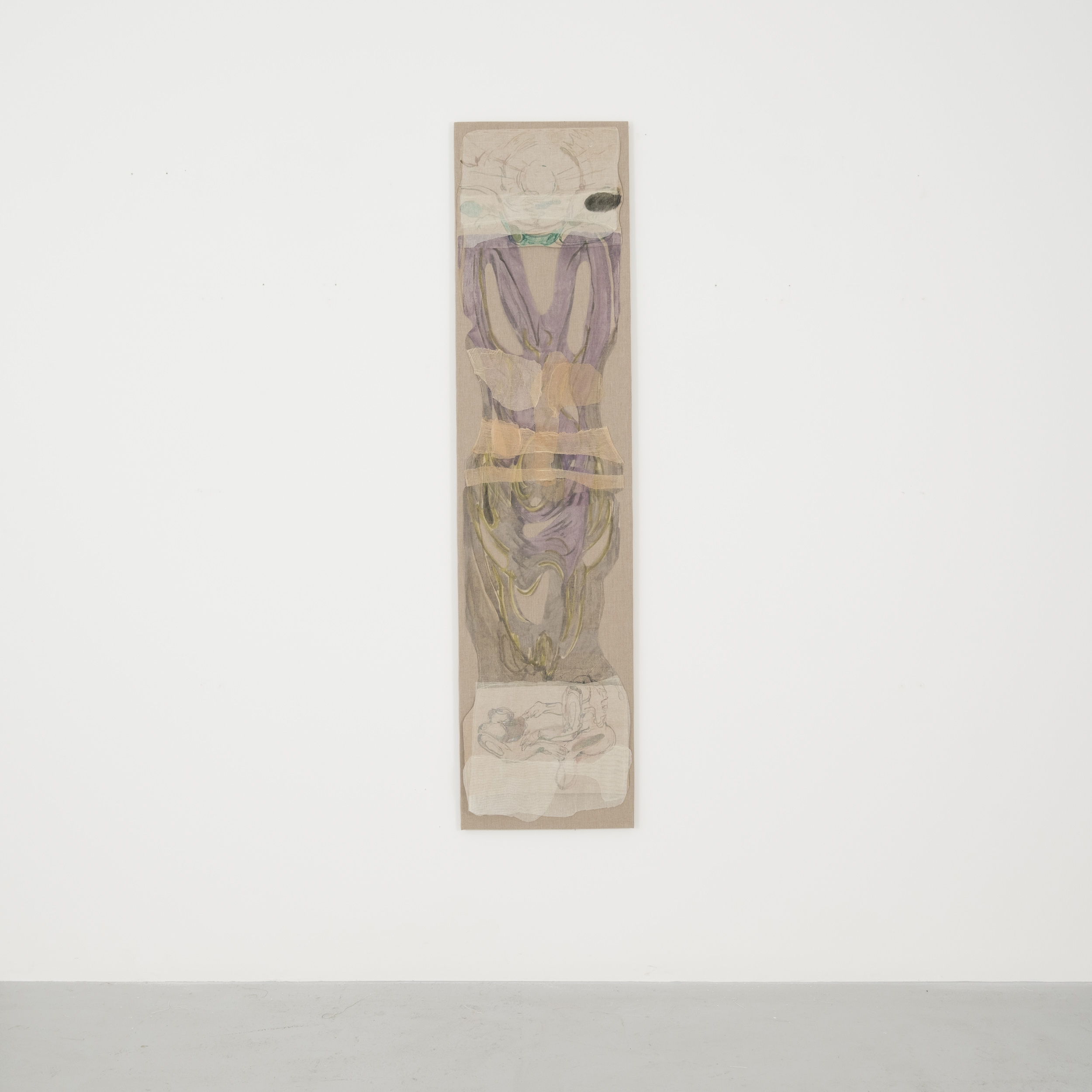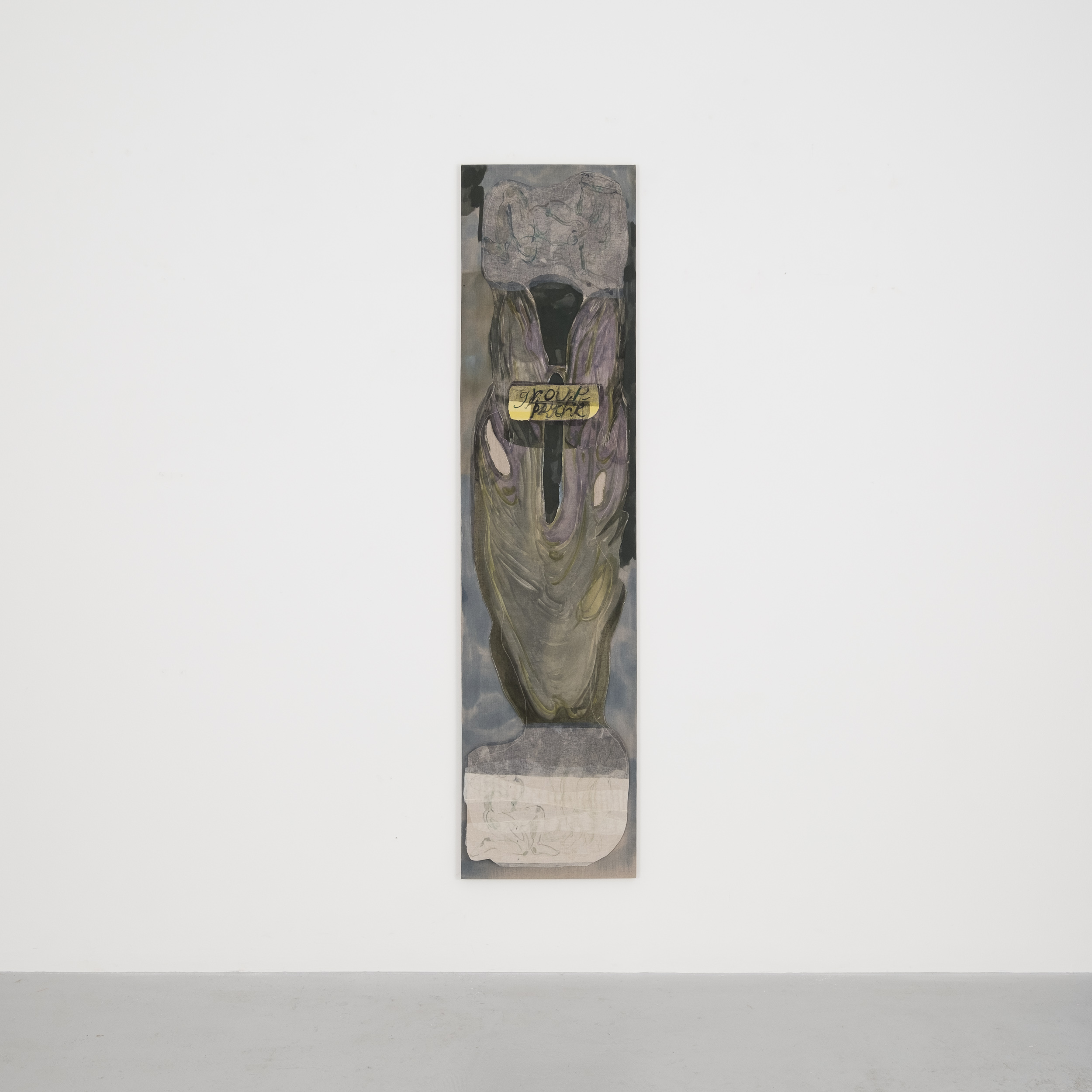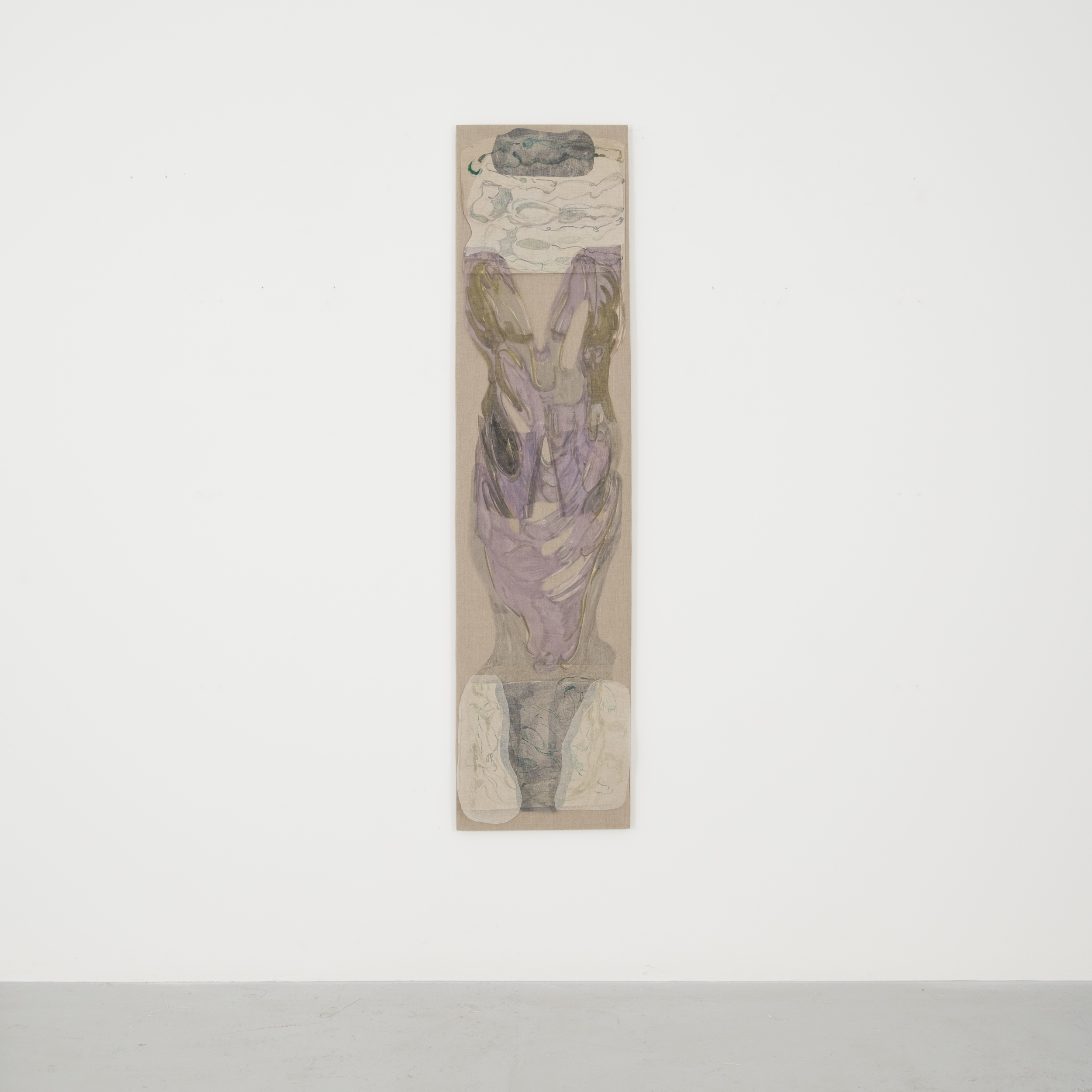Jeanne Gaigher
'group-psyche'
02 December 2023
-
27 January 2024
Jeanne Gaigher: 'group-psyche'. RESERVOIR Projects. Photographer: Matt Slater
RESERVOIR is pleased to present 'group-psyche', solo exhibition of new works by Jeanne Gaigher (b. 1990, South Africa). Opening on 02 December 2023, the exhibition will be on show until 27 January 2024.
Interview with the artist 1. Title: Your exhibition title, ‘group-psyche,’ intriguingly references South African author Eugene Marais's 'The Soul of a White Ant', a meticulously researched and devoted account into the world of termites. More than simply a scientific hypothesis the work is also a poetic and polemic excursion into instinct, memory and community. How does Marais's work intersect with the themes you explored in this new body of work? Do you often use literature references as a starting point? I actually tried starting with a different reference. I watched 'The Sacrifice', a film by Andrei Tarkovsky about an impending nuclear genocide and the protagonist’s bargain with God to give up his life and family if the war could be undone. I was looking for visual references to borrow - in the end, they were too particular - but I loved the connection between how big political disasters can often evoke a supernatural response in private. This is a theme I am very interested in, when the boundaries and capacity of the body are tested and even broken, how you reach for the supernatural in order to survive. At the same time, I was really taken with Eugene Marais and the patience in his account of the white ant. There’s a description I want to quote of how Marais, ‘during his years of unceasing work in the veld led him to formulate his theory that the individual nest of the termites is similar in every respect to the organism of an animal, workers and soldiers resembling red and white blood corpuscles, the fungus gardens the digestive organs, the queen functioning as the brain, and the sexual flight being in every respect analogous to the escape of spermatozoa and ova.’ There was something about this act of observing what is happening on the ground, just observing the surface, no preconceived theory to prove, just looking at the termite and seeing how it responds to its local environment. The body of work ended up being a combination of both these themes, the supernatural existing in the way that bodies or body parts become part of the landscape in the paintings. 2. Secrecy: You previously mentioned that the essence of mark-making lies not only in the image but also in the construction of the surface. Could you elaborate on how the choice of materials, the raw canvas and starched cotton gauze, but also other forms of construction like sewing and cutting, contributes to this idea in your work? How does this differ from other options available, for example oil painting? Gauze, to me, turns the painting secretive. It withholds so much information, it turns the painting into something fragile and self-conscious. By itself, held up against a white wall, the mark-making becomes so subtle - feeling like if you came back tomorrow it might even have disappeared entirely. The heaviest, most confident image is painted on raw canvas, and the subsequent layers of gauze are like projections that interrupt it. I suppose it’s similar to watercolour painting, in the sense that you are working in thin, transparent layers, but even so, I don’t think it’s possible to get the same delicacy or persistence with traditional painting methods, or oil painting. Along with the sewing, the fine stitching - there is so much handling of textile to get to this point. For this body of work in particular I kept thinking about the final layer of gauze as a thin blanket of snow, and the holes that are cut out are the ‘highest’ points in the image. The ghostly impression that ends up coming through feels like it happened a long time ago, the mark-making that is now harder to see - creating a sense that something is frozen inside a block of ice. I also think I’m really into how fabric makes you feel when you’re looking at it; maybe it’s just my own experience, but I think it can awaken something very personal in people. The moment it looks anatomical, or when it looks like you could potentially wear it as a garment, you connect with it on a much more physical level. Sometimes I will work with my own measurements - like in the long figure/fish-like bodies. The middle sections of the paintings are to my height, with the images at the top and bottom representing a kind of sensory experience of walking with your feet on the earth, while at the same time your thoughts can be experiencing something else. 3. Currents: The gauze has also extended beyond the paintings in ‘group-psyche’, to augment the interior architecture of the gallery space. How does the materiality lend itself to more sculptural application? It actually started from reading about the endangered sandfish in the Orange river in South Africa. There has been a massive effort to protect them. They swim up the river to spawn but because of drought and foreign fish preying on them, they are dying before they are mature enough to reproduce. Farm owners on the Orange river now have small ponds to keep the fish in until they are big enough to fend for themselves and then release them back into the river. I remember someone who grew up on the river telling me about sandfish as having been a big part of her family’s diet - she still has her grandmother's recipe book full of dishes made with sandfish. I was really intrigued by the relationship change between the fish and the people; first depending on them for food and now nursing and protecting them in ponds on their land. I wanted everything to flow well together, and part of the “staging” is the use of fabric installation throughout the space, which to me acts like currents - I thought about the stream for the sandfish as a choreography for the fabric currents in guiding the viewer through the space, giving them moments of privacy and quiet, so that they can stay longer, look more closely. I think this ties in well with Eugene Marais’s mission of observing termites so intimately, the idea of his patience as a human to really take the time to regard another species and try to understand them is a beautiful concept. 4. Group-Soul: If you consider the body of work as a whole, was there a certain development in the making process for you? For example - making reference to Marais’s poetic understanding of the termite colony’s ‘group soul’ - were changes made collectively rather than individually? One of the focal points of the show is a series of four paintings that hold what seems at first to resemble rocks or boulders. They each have a high horizon line, with a sun and landscape at the top - a loose reference to Edvard Munch’s The Sun. After a closer look you realise the ‘boulders’ are actually torsos that I painted stacked on top of each other. This also ties in with my idea of the body negotiating its capacity in a supernatural way. I think of the top one as being present, kind of basking in the sun, while the other torsos successively going deeper ‘underground’ represents versions before it or even days before it, like a calendar. This series was made in the way a graphic novel would repeat images with small changes for developing dialogue. Whenever I shifted, painted, cut or stitched on one of the surfaces, the rest of the series necessarily had to change as well. The reading of the image is in the slight differences between each of them. This idea is applicable to all the works as the viewer flows through the show. 5. Distinct Intentions in Each Layer: Could you share some insights into some of the imagery present in the layers - figures, lilies, text and landscape - and how you choose your references? Additionally, how do you navigate the interplay between them throughout the painting process? These layers don't exist solely to complete a single image; instead, each layer harbours a distinct intention, energy, life, time, and subject. (This distinction is emphasised in the title, prompting viewers to recognize the diverse pockets and layers of power play converging within). Each material layer competes or negotiates with the one beneath or above it. I believe this essence is what I'm pursuing—an interruption in the idea, an element that prevents its full development, a compromise. The coexistence of many intentions in a single work creates a sensuality in its movement, resembling an anatomy or a living body with a dynamic presence, bursting from its scenes and seams. The way I make paintings is not to produce a specific representation of one subject. I draw so that it includes text and so that I can attach other ideas to the subjects. It's a very loose way of drawing, more a feeling of something happening than a perfectly rendered image. It's also a way of including a nod to some references in a way that it doesn’t become central to the reading of the work. It's not about understanding the work, it's about observing the work and generating a way of thinking about the image not as a static representation but as something that has a history and is influenced by many things. The images I choose to work with are a very wide range of things. I try to choose things that have nothing to do with one another and then see how it feels together in a painting. I'm attracted to things that are personal but also to politics. In one painting (5) there is a reference to arum lilies (they were growing very intensely all over the Western Cape of South Africa because of recent rainfall; my mother and grandmother also used to draw them in pastels, they are edible (something i didn't know before) and people also sell them as bouquets on the street so they are also this free economy. Behind the arum lilies two women kneel, facing each other. They are a reference to a contemporary Russian cartoonist whose characters react in a metaphysical way when they become victims of the villains in the short noir fictions. The way the scene is put together feels ephemeral because of the amount of gauze I've been using. I think that my thinking around any of the subjects that I choose to use as guardrails or choreography for my hand is a way to interrogate my own body or our own bodies, to make us self aware (similar to how I think of the paintings as showing self-consciousness, by way of their construction). The last painting in the show (12) the viewers see is a reference to Goya's painting 'An Heroic Feat! With Dead Men!' I've always been obsessed with the composition and never knew how to use such a brutal image in my work without the brutality of it taking centre stage in the viewer's thoughts. The painting is certainly a reference to grief which is a very relevant topic to the world, but also to the change that follows it.

